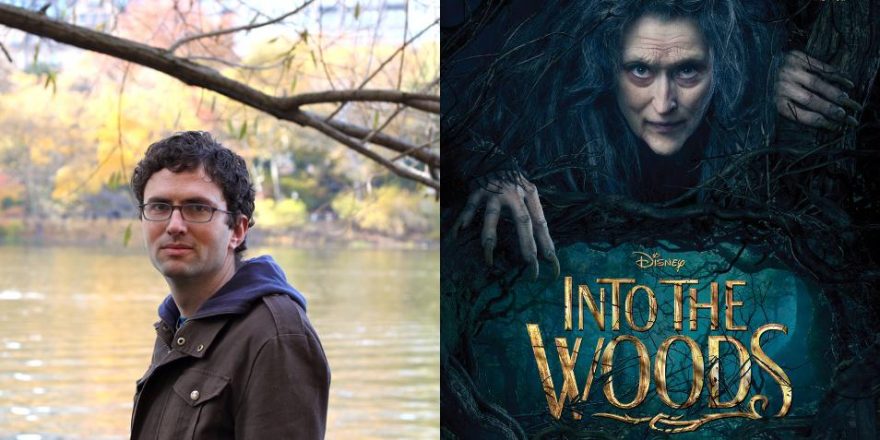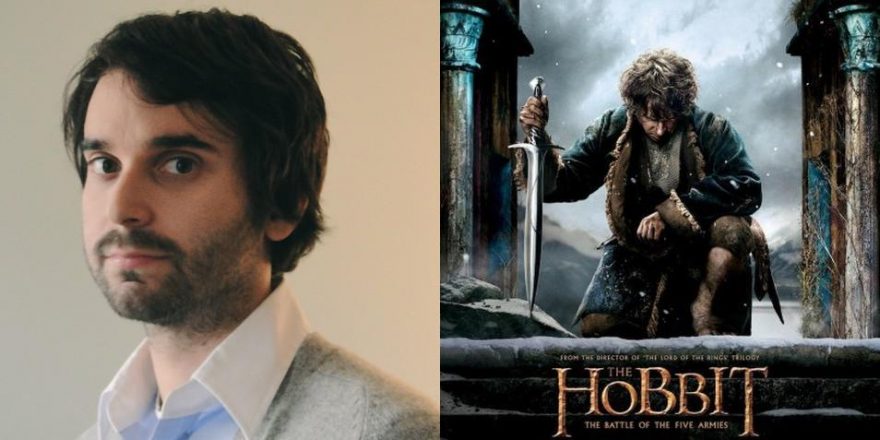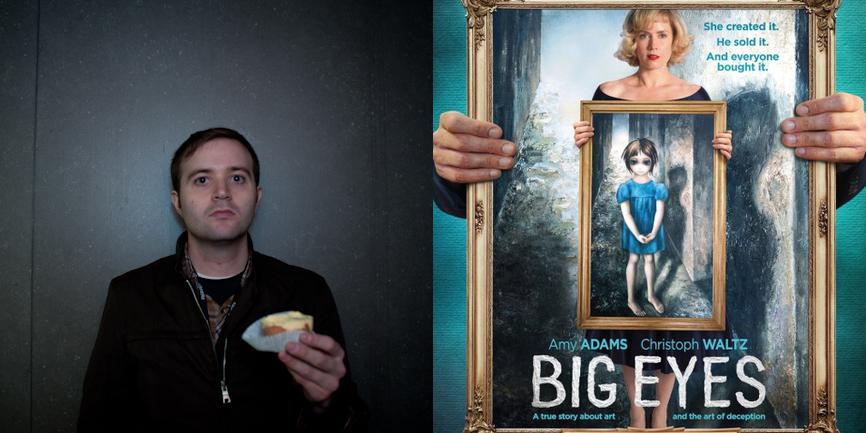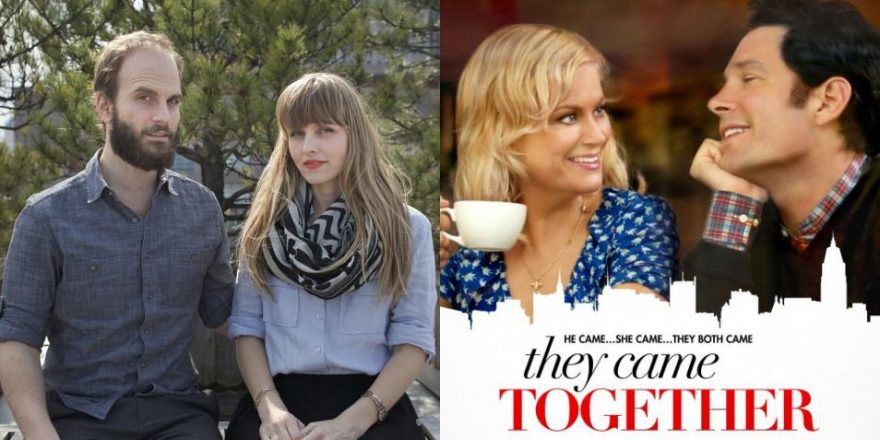My boyfriend, Adam, is a musical theater fanatic. I am not. I don’t hate musicals — I just don’t seek them out. So I had never seen a stage production of Stephen Sondheim and James Lapine’s Into the Woods, much to the chagrin of my significant other, who claimed it as his favorite Sondheim show. In fact, I was so ignorant of the musical that when I cast Joanna Gleason in my film The Skeleton Twins, I excitedly told Adam, “I just cast Joanna Gleason! You know, the actress from Boogie Nights and Woody Allen movies?”
Aghast, he said, “You mean Joanna Gleason who won the Tony for playing the Baker’s Wife in Into the Woods?”
Uh, yeah, that too, I guess.
And ever since that conversation, he’s been trying to get me to watch the original Broadway production on DVD, an invitation I’ve consistently declined. I just don’t like watching taped versions of live productions — they feel like thin, distanced photocopies of an event that should be experienced live. I’d rather hold out and watch a live production… or the movie version.
Well, thanks to Rob Marshall and the fine folks at Disney, the movie is here, and needless to say, I leapt at the chance to write about it for Talkhouse — specifically my thoughts on the film vs. my boyfriend’s. Newbie vs. Fanboy. Film nerd vs. musical-theater geek.
And so here’s our rough-and-tumble conversation verbatim, complete with tangents, banter, poorly-constructed sentences and minor squabbles — a frighteningly accurate portrait of an average dinner-time conversation at our house.
CRAIG: So… hello I’m Craig Johnson. And my partner Adam Roberts and I —
ADAM: Hello —
CRAIG: Just got back from seeing Into The Woods. Adam, let’s talk about it.
ADAM: It’s like being on Charlie Rose right now.
CRAIG: What were your initial reactions and thoughts?
ADAM: I thought it was a brilliant adaptation of the musical from stage to screen. I thought Rob Marshall did a brilliant job. But I prefer the stage musical.
CRAIG: OK. So what was brilliant about it? We’ll start there.
ADAM: You’re being very formal. You could be more conversational —
CRAIG: Well, no, I want to know what you thought was brilliant about it.
ADAM: He made it way more cinematic, and he chose lots of things to illustrate cinematically that are not illustrated in that way in the show. For example, Rapunzel’s tears dripping into the prince’s eyes. Obviously, all the giant stuff and the witch’s coming and going. But, more importantly, what made it so successful as an adaption has everything to do with killing your darlings; they threw away so many parts of the stage musical that I love as a stage musical. They got rid of songs that would’ve slowed down the narrative and they picked and chose which songs —
CRAIG: And you think they made good choices?
ADAM: Yeah, I mean, there were parts where I was disappointed that they didn’t have the song I was expecting. There’s a beautiful song between the baker and his father called “No More,” and they cut that, they just played the music. But I think Rob Marshall, working with Sondheim and James Lapine, made deeply intelligent decisions in adapting it for the screen.
CRAIG: So we’re gonna Siskel and Ebert this now. But in this case, Siskel pretty much agrees with Ebert because I thought it was pretty extraordinary as an adaptation of a musical. And I think it’s hard to adapt beloved plays and musicals. Like, I’m not a big fan of the movies of My Fair Lady or even West Side Story… I find both of those a little turgid, actually. Except for “America” — I could watch that number over and over again. But I find them a little lugubrious because they’re not embracing cinema. And In fact, my favorite movie musicals are original movie musicals, stuff like Mary Poppins and Singin’ in the Rain and South Park: Bigger, Longer & Uncut — because they’re not slaves to whatever came before them. Now, that said, I didn’t know the story at all.
ADAM: Mmmhm.
CRAIG: And it just confirmed what’s so brilliant about Sondheim, which is — he often does this in his musicals — he makes the first act as one thing and then he bisects it and the second act is a deconstructed version.
ADAM: A lot of high schools only do Act One of Into The Woods, they never get to Act Two.
CRAIG: Ah, see, that destroys the whole point for me.
ADAM: Right, because the point is seeing the consequences of everyone’s actions from Act One. Going beyond “Happily Ever After.”
CRAIG: To me, the point is, in the first half we’re showing you a fairy tale world where everything has a happy ending and where everything is good and bad and black and white. And then, the second half just plunges into this wonderful shade-of-gray world of real life and ambiguities, and it completely subverts the whole idea of what a fairy tale is, and says, “What would happen if all these fairy tale characters kept going beyond happily ever after?” Not only do they keep going, but then suddenly we’re in the real world.
ADAM: Mmmhmm.
CRAIG: With infidelities and being pulled in two different directions and there’s no bad guys and good guys and everybody’s got a fault — I loved the number about whose fault it was! And it just made me go, “Oh yeah, it is their fault. Oh no, it’s that person’s fault.”
Even though I’ve not seen this musical, I’m a big fan of the Sondheim musicals that I have seen for the same reasons — they subvert and deconstruct what musicals are all about.
ADAM: Can I ask you a question?
CRAIG: Mmmhmm.
ADAM: When you compared us to Siskel and Ebert earlier, was that a fat joke?
CRAIG: No! I didn’t say you were Ebert.
ADAM: Just making sure you’re not calling me fat.
CRAIG: No, I’m not calling you fat.
ADAM: He’s also dead.
CRAIG: They’re both dead.
ADAM: Oh.
CRAIG: Yeah, Siskel died before Ebert.
ADAM: Oh yeah.
CRAIG: I would like to see it again just to really…
ADAM: You have to watch the Original Broadway Cast DVD.
CRAIG: I don’t think I want to.
ADAM: There’s a very specific reason you need to see the original Broadway cast of Into the Woods.
CRAIG: Why?
ADAM: What makes it so remarkable and extraordinary is Joanna Gleason, who was in your movie, The Skeleton Twins. The night before you got to direct her, I made you watch her “Moments in the Woods” scene, which Emily Blunt did in this movie.
CRAIG: Yeah, I loved it when Joanna did it. But it has more impact when you see it in context. I thought Emily Blunt was fantastic, by the way.
ADAM: There’s something luscious and beautiful about Emily, she kind of fits into the world of that movie, you just kind of take her as part of this fairy-tale universe. But what’s so wonderful about Joanna Gleason in Into The Woods is that she’s like this dry martini — it’s almost as if she’s coming from an Edward Albee play. She brings this voice of stark reality into everything, so when she does “Moments in the Woods,” it’s so, so dry — it’s dry as can be — and it’s this unbelievable, Tony-winning performance. I feel like Emily Blunt did a fine job, I feel like Joanna Gleason in that role is iconic. Anyone who’s ever seen it would agree.
CRAIG: Well…
ADAM: You need to see her in it! You can’t judge it until you see it.
CRAIG: I’m not judging it. I mean, I’m only reacting to what was placed before me. And what was placed before me, I thought, was a delightful, real performance. Everything about Emily. She’s slowly becoming one of the most interesting actors to watch. Edge of Tomorrow, which I think was one of the most underrated movies this year — I think it was fucked over by bad marketing — I think it was certainly on my Top 10 list.
So why did you say then that the original musical, other than it being the original musical, is still your favorite?
ADAM: There’s just lots of weird things that happen in the musical that make it a little more nuanced and a little more odd and offbeat, which I’ve always loved. There are moments in the second half of the movie that still felt very stagey to me. Like when they were all shaking as the ground was shaking and they’re all in this tableau in the woods — that moment really felt to me like we were in a theater.
Which is not a problem, but when you see that on stage, what’s great is you’re really using your imagination to imagine what’s coming and what everyone’s reacting to.
CRAIG: But I think that’s baked into the movie too. We’re not seeing the stories. We’re not seeing her at the ball, we’re not seeing Jack go up the beanstalk, and I was like, “Oh cool.” So that was in the movie.
ADAM: Oh yeah. I think it was very smartly handled. I’m just saying I prefer the play, because it asks even more of you than the movie does. As an audience member.
CRAIG: It’s funny. I think, whenever something’s based on something, you’re always like, “The book’s better.”
ADAM: Well, Into the Woods was built to be a two-act musical with a real beginning, a big opening number, a big end to Act One, a big opening to Act Two, and then a big finale in Act Two. The job of Rob Marshall was to take this thing and turn it into something that feels inevitably like a film and again I think he did a great job, but I think its natural state is on the stage as a musical.
CRAIG: My favorite part of the movie by far was that final third when shit got real. There was real exuberance and, like you said, real cinema on display. I think in this day and age, I’m always asking myself when I go see something, “Why is this a movie and not TV?” Because TV is so good these days and is doing so many interesting things. Movies need to be able to do something that TV can’t. Movies have to be bold in their vision, to go places that you can’t go on TV and to belong on a big screen. Gravity could never be a TV show.
ADAM: Well, case in point, we had the screener for Into The Woods, but you wanted to see it in the theater.
CRAIG: That’s right, because it felt like a grand spectacle, which it was.
ADAM: By the way, I’m selling that screener on eBay for $40. (Just kidding!)
CRAIG: It’s watermarked to me so I hope you like having an arrested boyfriend.
ADAM: So, was there anything about the movie that you don’t think works or that you don’t like?
CRAIG: I mean, it’s structurally odd, but I think I like that about it. I would’ve preferred it to have gone more half and half (half fairy tale, half real-life consequences) — but then it probably would’ve been a three-hour movie. So I understand all of their decisions. But I’m just so glad they decided to make this kind of movie. I can see from the studio executive’s perspective why they did it. Because all Hollywood is trying to do now is cram as many familiar pre-existing characters into one film. All of the scripts I’m hearing about are, “Here’s a movie where the Tooth Fairy and Santa Claus and Frankenstein and Robin Hood and Darth Vader all get together for an adventure.” It’s just purely an economic thing, pre-existing characters. And I got to tell you, I was just waiting for the moment where they’d reveal the giant woman and it would be, like, Lily Tomlin, or Roseanne Barr.
ADAM: [Laughing] Roseanne Barr. I would’ve paid a lot of money to see that. Singing the National Anthem.
CRAIG: You know, recognizable stunt casting. But I’m very glad we didn’t pan up and reveal that the giant’s wife was Betty White or something.
ADAM: The ending of the musical is that everyone comes back out and they all sing this reprise of “Into The Woods” and then “Children Will Listen.” But the end of the movie just kind of went out with a whimper for me.
CRAIG: Yeah, yeah, I was waiting for something a little more everything-coming-together…. We saw a production of Sunday in the Park with George on Broadway that I found so profoundly moving at the end of the first act, and it was because all of these disparate elements come together in this beautiful, beautiful way. I was hoping that we’d get something like that in this movie.
But it’s just so wonderful to see a big Christmas entertainment that is rich and smart and nuanced and filled with ambiguity, and has such real artistry to it. And I think it’s so hard to do what they did, which is to make an adaptation that sort of can satisfy, can be true to the source material, but also be true to what cinema is. I’m getting more and more: “Boy, it would be nice to make something that has more than a million-dollar budget.’
ADAM: Well you should see the stage musical, which we can watch right now.
CRAIG: No, let’s go to a gay bar.
Update: We didn’t end up going to a gay bar or watching the stage musical DVD. We went to bed because we’re old.








